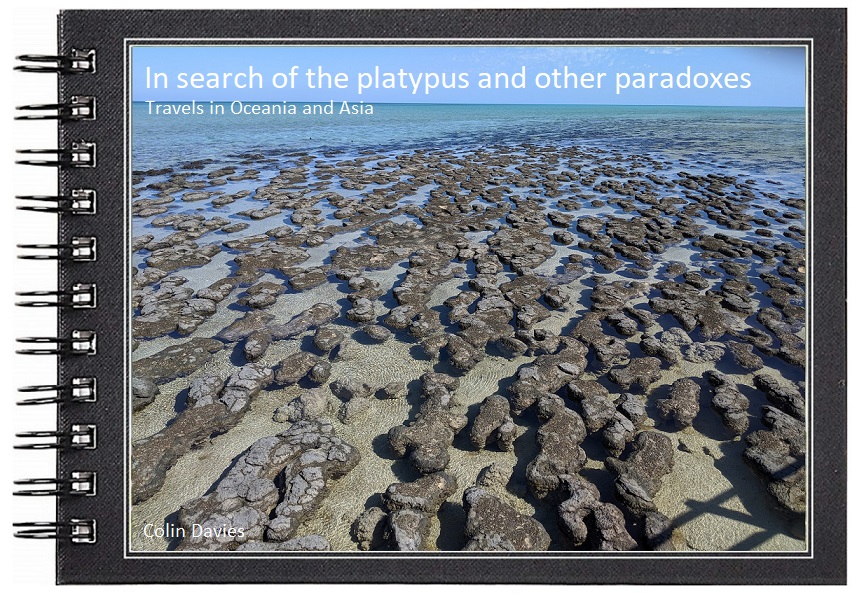On 11th October 2015 we arrived in Sydney at the start of a 3 week holiday to Australia, my first ever visit to country, in fact my first visit to the southern hemisphere. It wasn't purely a birding holiday, it was as much about general sightseeing, and the first seven days were to be spent in or around Sydney. We did the usual, went to the Opera House, walked across the bridge, went to the Rocks, sunbathed on Bondi beach, did some shopping etc., but we also spent time in the Botanical Gardens and took the ferries to Watsons Bay and Manly, and ventured off the main tourist route a little when we visited Centennial Park on a couple of occasions and took the coastal footpath from Bondi beach to Coogee, and even spent half day whale watching. So plenty of opportunities to see lots of Australian wildlife and in fact it proved to be a nice gentle way of starting the holiday from a birding point of view.
Sunday, 8 November 2015
Saturday, 7 November 2015
Full list of birds seen in Australia - 2015 holiday
This is a full list in alphabetical order of species seen on the holiday, 12th -31st October 2015, with location and maximum number of birds seen at each location in brackets.In total, 170 species of which 144 were new for me.
Mudskippers
During the holiday we saw what looked like two different species of mudskipper at Port Douglas. The first was a small fish about 3" (7.5cm) long and which inhabited the mud on the edge of the marina. This was a very limited habitat, with mud no more than about 1m wide, with rocks and scattered mangroves growing in it. From memory I don't remember this habitat expanding or contracting much with the tide, i.e. there wasn't much of a tidal range.
The second type of mudskipper was seen on the banks of the tidal section of river at Port Douglas. Here on the edge of the mangroves there was much more exposed mud and the mudskippers here were a lot bigger, some reaching 8" (20cm). There were also no rocks on this mud and it seemed to have a large tidal range.
When I saw them I couldn't be sure if these were the same species as those seen in the harbour, i.e. I thought it possible that the larger fish were simply the adults whilst the smaller fish might be juveniles occupying a different habitat.
Since I've been back in the UK I've been doing some research to try to find the truth about these fascinating creatures. Whilst searching the internet for infromation I came across a paper called "The natural history of mudskippers in northern Australia, with field identification characters - Takita, Larson & Ishimatsu (2011)". It cost me £2 to download but proved to be an excellent read.
It turns out that not only are there many species of mudskipper in northern Australia, there are in fact several genera. I'm now convinced that we saw two species, in fact I think that they are from two different genera Periophthalmodon and Periophthalmus. They're a bit difficult to id for sure from photographs, but I think that the large fish from the river is Periophthalmodon freycineti or giant mudskipper whilst the fish from the harbour is silver-lined (barred) mudskipper Periophthalmus argentilineatus.
Giant mudskipper.
Silver-lined mudskipper. I think.... I can't see the silver lines on this one but it was in the same area as the fish above.
The second type of mudskipper was seen on the banks of the tidal section of river at Port Douglas. Here on the edge of the mangroves there was much more exposed mud and the mudskippers here were a lot bigger, some reaching 8" (20cm). There were also no rocks on this mud and it seemed to have a large tidal range.
When I saw them I couldn't be sure if these were the same species as those seen in the harbour, i.e. I thought it possible that the larger fish were simply the adults whilst the smaller fish might be juveniles occupying a different habitat.
Since I've been back in the UK I've been doing some research to try to find the truth about these fascinating creatures. Whilst searching the internet for infromation I came across a paper called "The natural history of mudskippers in northern Australia, with field identification characters - Takita, Larson & Ishimatsu (2011)". It cost me £2 to download but proved to be an excellent read.
It turns out that not only are there many species of mudskipper in northern Australia, there are in fact several genera. I'm now convinced that we saw two species, in fact I think that they are from two different genera Periophthalmodon and Periophthalmus. They're a bit difficult to id for sure from photographs, but I think that the large fish from the river is Periophthalmodon freycineti or giant mudskipper whilst the fish from the harbour is silver-lined (barred) mudskipper Periophthalmus argentilineatus.
Giant mudskipper.
Silver-lined mudskipper. I think.... I can't see the silver lines on this one but it was in the same area as the fish above.
Whimbrel N. p. variegatus
Just a quick note on the whimbrel I saw at Port Douglas, turns out they were of the Asian race N. p. variegatus which is intermdiate between the Eurasian and Hudsonian whimbrels, in that it has a whitish rump barred brown.
Subscribe to:
Comments (Atom)
-
Photo: Snowy albatross. "Wanderer at 6 o'clock!", the cry went up and sent shivers down my spine. This was the moment I ha...
-
I've been to Southern India twice now, but neither were birding holidays. The first was to meet the family of my son's...
-
Philips Island is a 90 minute drive south east of Melbourne. It's a proper island but you can drive onto it via a bridge. The day we ...













